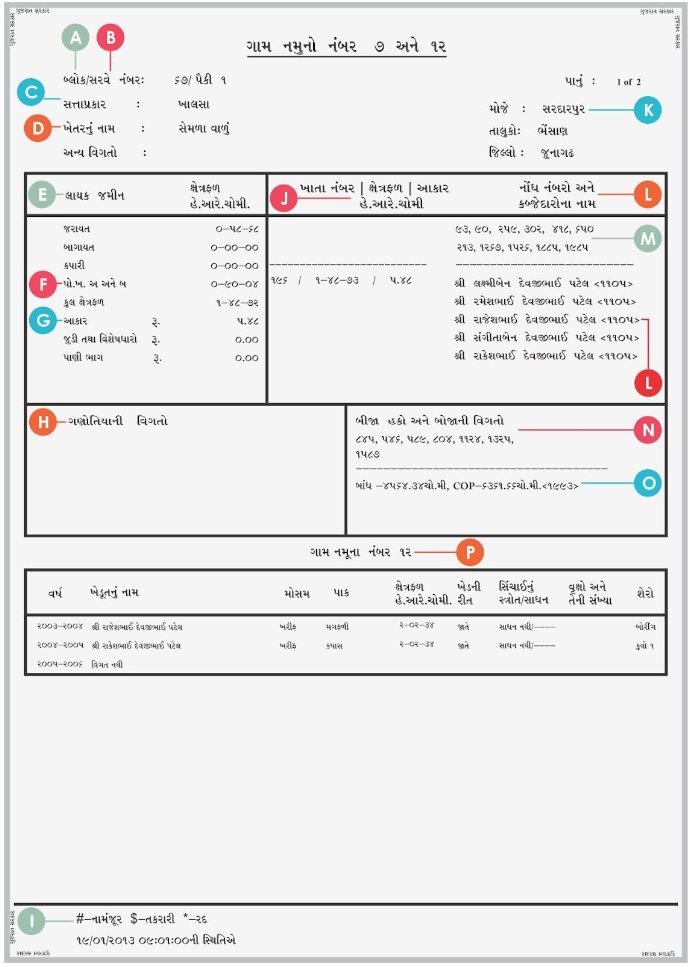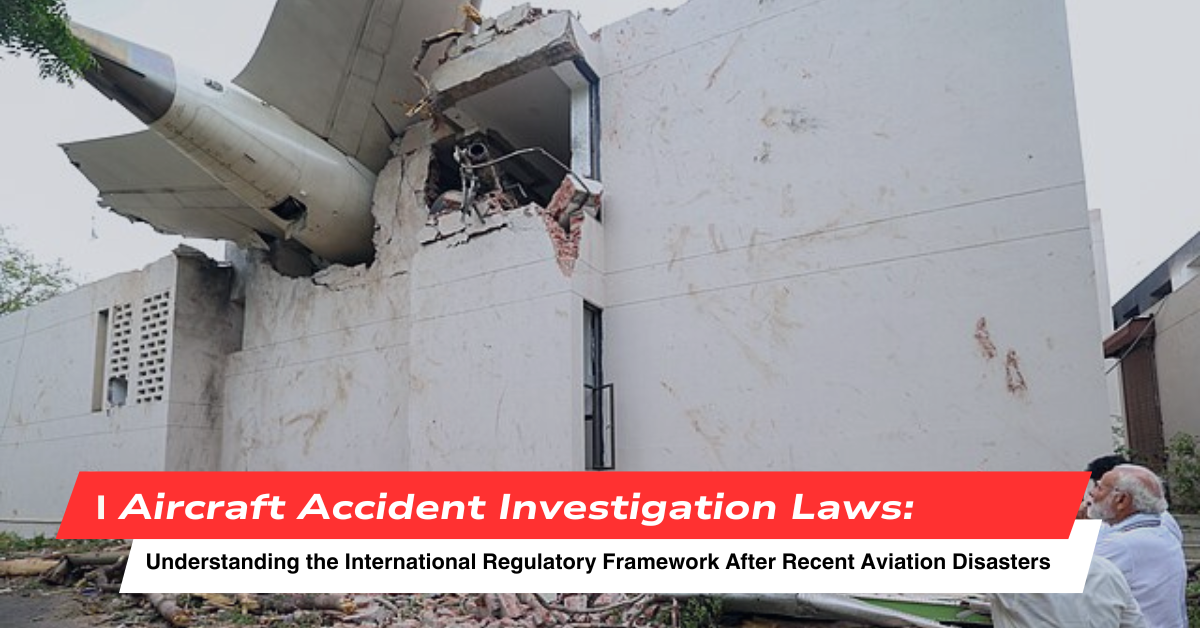Introduction
Village Form No. 7/12, or the “Paanipatrak,” is a crucial document in the land revenue administration of Gujarat. The 7/12 extract is a document that contains crucial details about a piece of property, including the owner’s name, location, and other details, as well as taxes, legal issues, obligations, and other information. “The Revenue department of the governments of Maharashtra and Gujarat, maintains it.”
This form serves as a record of rights and provides comprehensive details about a particular piece of land. It is an indispensable document for various legal and administrative purposes.

General Understanding of Structure and Components of Form No. 7/12
A – Block Number (બ્લોક નંબર)
This refers to the specific block number within a survey area where the land is located. It helps in the precise identification of the land parcel.
B – Survey Number (સર્વે નંબર)
For identification purposes, authorities assign this unique number to a particular piece of land. It is crucial for legal and administrative tasks.
C- Type of Land Tenure (જમીનનો સત્તા પ્રકાર)
This specifies the nature of the land Tenure, such as Old Tenure, New Tenure, or Government-owned etc.
D- Field Name (ખેતરનું નામ)
This is the name given to the specific field or plot of land. It may be a local name or a name registered in official records.
E- Arable Land (ખેડવા લાયક જમીન )
This indicates whether the land is suitable for cultivation or not.
F- Wasteland (પોત ખરાબ)
This section mentions if the land is barren or not suitable for cultivation or construction.
G- Dimensions/Area (આકર/જુડી)
This section mentions the total area of the land, usually in acres or hectares, along with its dimensions.
H- Name of the Tenant (ગણોતીયાના નામ)
If someone other than the owner is cultivating the land, this section will mention the name of the tenant or cultivator.
I- Not Approved (ના મંજૂર)
This indicates whether the land has any pending approvals or if it is under any kind of dispute.
J- Account Number (ખાતાનંબર )
This account number associates the land with taxation and other administrative purposes.
K- Name of the Village Concerned (મોજે જે તે ગામનું નામ)
This specifies the name of the village where the land is located.
L- Name of the Occupant (કબ્જેદારનું નામ)
This mentions the name of the person who currently occupies the land.
M- Record Entry Numbers (નોંધ નંબરો)
This section contains the numbers of any records or documents related to the land.
N- Details of Other Rights and Liabilities (બીજા હકકો અને બોજાની વિગત)
This part details any existing rights, leases, or liabilities related to the land.
O- Construction C.O.P (બાંધકામ સી.ઓ. પી.)
This indicates whether the land has a Certificate of Permission (C.O.P.) for construction purposes.
P- Information Related to Farming (ખેતી વિષયક માહીતી)
This section furnishes information about the crops farmers cultivate, including details about the type of crops and the cultivated area.
Importance of Village Form No. 7/12
- Legal Evidence: Paanipatrak marks as a legal evidence of ownership in courts when dealing with land disputes
- Loan Approval: Financial institutions may require this form for loan approvals.
- Land Transactions: Paanipatrak is essential for buying, selling, or transferring land.
- Utility of Paanipatrak in Agriculture: This form provides information about the irrigation facilities available for the land, the type of crops that can be grown, and whether the land is arable or barren. It also indicates the extent of wasteland, if any, within the property.
- Understanding Land Quality through Paanipatrak: Paanipatrak can be used to understand the quality of the land, including its suitability for agriculture, the presence of any public roads or water bodies, and the extent of wasteland, commonly referred to as “Potkharabo.”
- Methods of Farming as Indicated in Paanipatrak: The Paanipatrak also indicates the method of farming, whether it’s done by the landowner, family members, or through hired labor. This is usually indicated by specific numerical codes in the document.
- Comprehensive Record of Rights: This form not only records the rights of the person in possession of the land but also includes details about leases, the method of farming, and other rights acquired in various ways.
- Special Cases in Paanipatrak: In cases where individuals unlawfully possess the land, the Paanipatrak records such instances to offer a comprehensive view of the land’s legal status.
Obtain Village Form No. 7/12 here
Conclusion
Anyone involved in land transactions or management in Gujarat must understand Village Form No. 7/12 for its crucial importance. It not only serves as a record of rights but also provides comprehensive details that are essential for various legal and administrative procedures.













